Finding darkness in the light

How Vera Rubin changed the Universe.
“Science progresses best when observations force us to alter our preconceptions.” –Vera Rubin
Look out at the night sky, and what do you see? Stars: glittering points of light. Sure, we also have galaxies, the massive collections of stars in the night sky, of which our Milky Way is merely one. These shining cosmic beacons appear to be the largest, most massive structures we have that are bound together. Based on what we’ve seen nearby — where 99.8% of the mass of our Solar System is bound into our Sun — we’d expect that stars would dominate the Universe. In terms of light, they surely do.
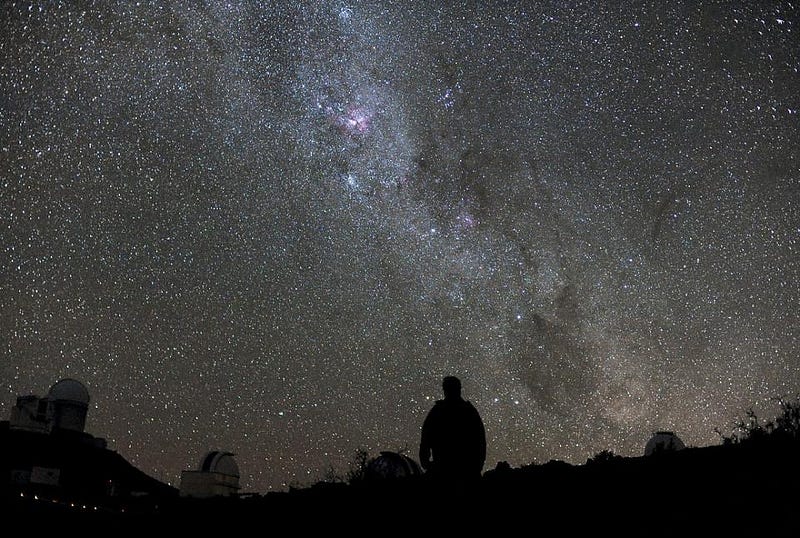
But what about in terms of gravity? In our Solar System, the Sun dominates. So what about in individual galaxies? You’d likely expect stars to dominate as well. If we understand how stars work (and thanks to astronomy, we think we do), and we understand how gravity works (and thanks to Newton and Einstein, we think we do), then we ought to be able to predict how quickly the stars in galaxies rotate around the center. If a galaxy is face-on to us, where we can see the entire spiral, we’d have to wait hundreds of thousands of years to be able to detect and measure significant changes in the positions of most of these stars. But if a galaxy were tilted, or edge-on to us, there’d be a trick we could use.
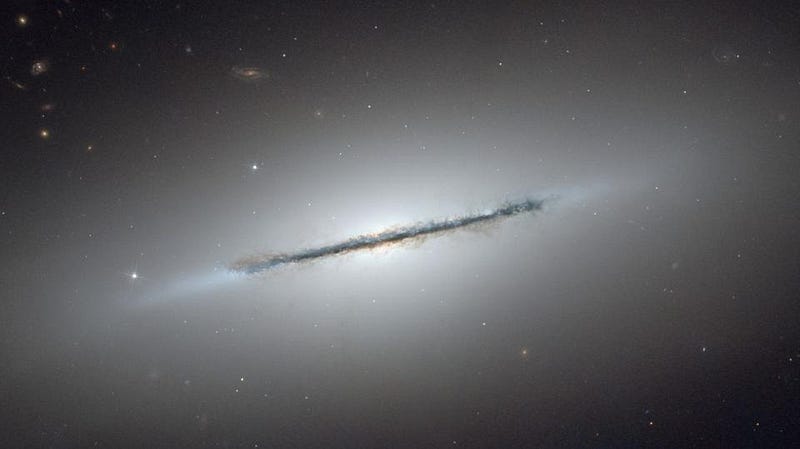
As a galaxy rotates, the stars move around its core. If it’s edge-on to us, then on one side, the galaxy rotates “towards” us, while the other side rotates “away from” us. The faster the galaxy rotates, the faster the “towards” and “away” motions are. If the rotations are fast enough and your instruments are good enough, you can actually measure this effect. This was the incredible possibility that Vera Rubin began investigating. Thanks to advances in spectroscopy — the capability of breaking light up into individual wavelengths, detecting emission and absorption lines — Vera Rubin and Kent Ford started taking measurements of nearby galaxies in an attempt to measure their rotation speeds. But it wasn’t just the overall speeds that were important.
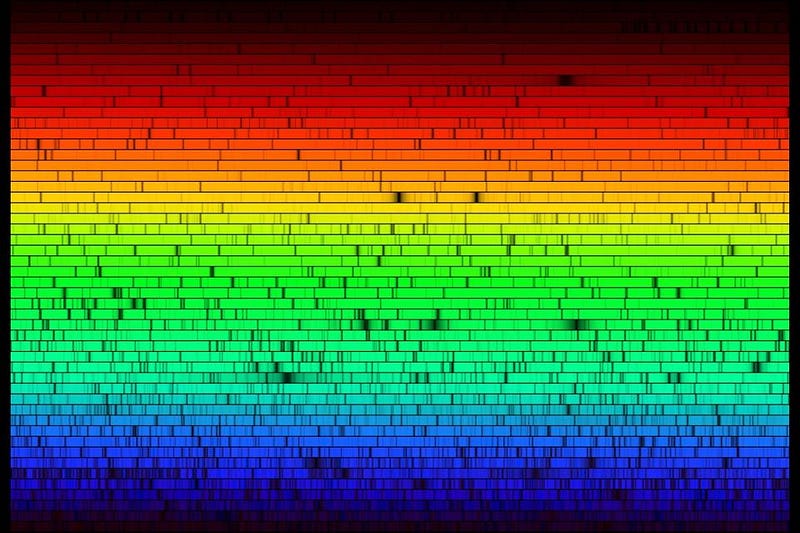
You see, in our Solar System, the planets revolve around the Sun at a particular speed. Mercury orbits the fastest at 48 km/s, followed by Venus at 35 km/s, Earth at 30 km/s and so on, all the way down to Neptune which orbits at a paltry 5.4 km/s. The reason for this is twofold: the orbital speed depends on how much mass is interior to a planet’s orbit and how far away the planet is from the Solar System’s center-of-mass. Galactic dynamics aren’t much different, except that there are many masses contributing throughout, as the stars are found not just in a concentration at the center, but spread all throughout. Based on the masses we can see, we’d expect the central stars would rotate slowly, would increase in speed as you moved out towards the edges for a little while and then drop down to a lower value as you moved to the outskirts. But that’s not what Rubin saw at all.
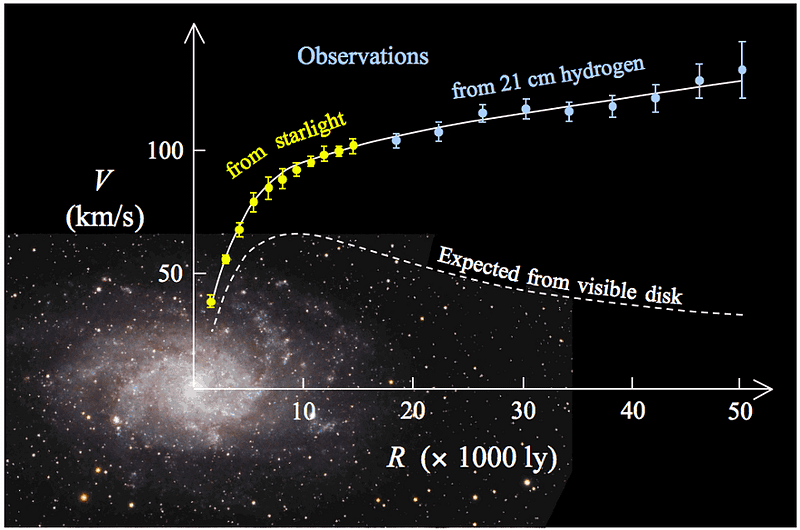
Instead, the speeds rose rapidly, but then leveled off. As you moved farther away from a galaxy’s core, the stars’ rotation speeds didn’t drop, but rather leveled off to a constant value. The rotation curves, unexpectedly, were flat. Rubin’s work began in the Andromeda galaxy, our closest large, galactic neighbor, but quickly was extended to dozens of galaxies, which all showed the same effects. Today, that number is in the thousands, and our multiwavelength, advanced surveys have shown that it can’t be missing atoms, ions, plasmas, gas, dust, planets or asteroids that account for the mass. Either something is screwy with the laws of gravity on galactic (and larger) scales, or there’s some type of unseen mass in the Universe.
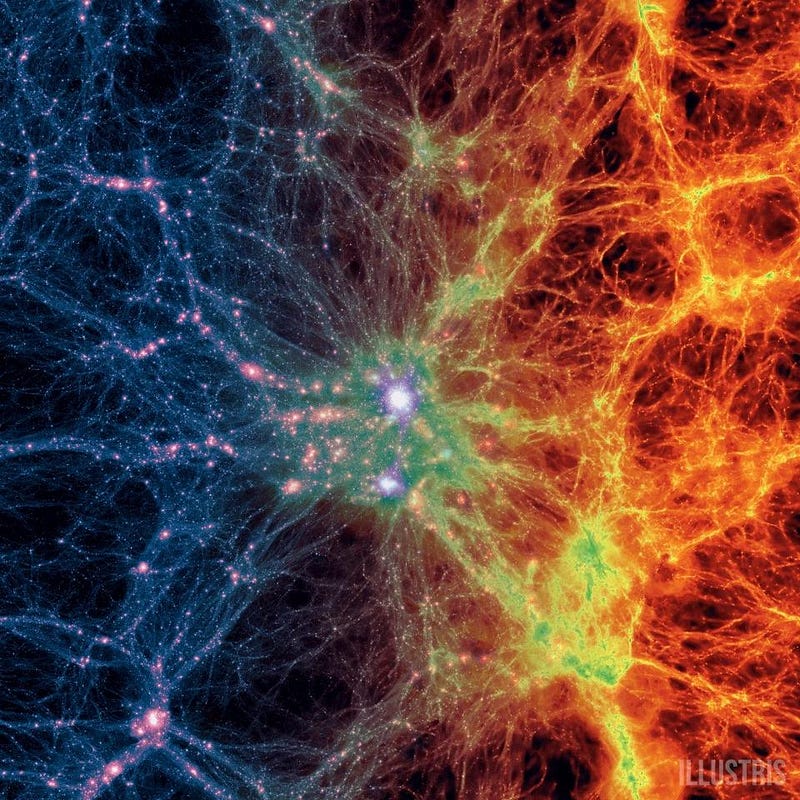
The latter explanation is known today as dark matter. While there were hints of it in the 1930s — observations of individual galaxies within clusters showed they were moving too fast for the stellar masses they displayed — Rubin’s evidence was far stronger and more robust. Since that time, large-scale structure formation, the fluctuations in the cosmic microwave background and many other astronomical indicators point to the existence of dark matter. Many experiments were created to (so far, fruitlessly) search for the particle that might be behind it. And although we’re still seeking the holy grail of dark matter, a direct detection, it’s now a vital component of modern cosmology, astrophysics and theoretical physics.
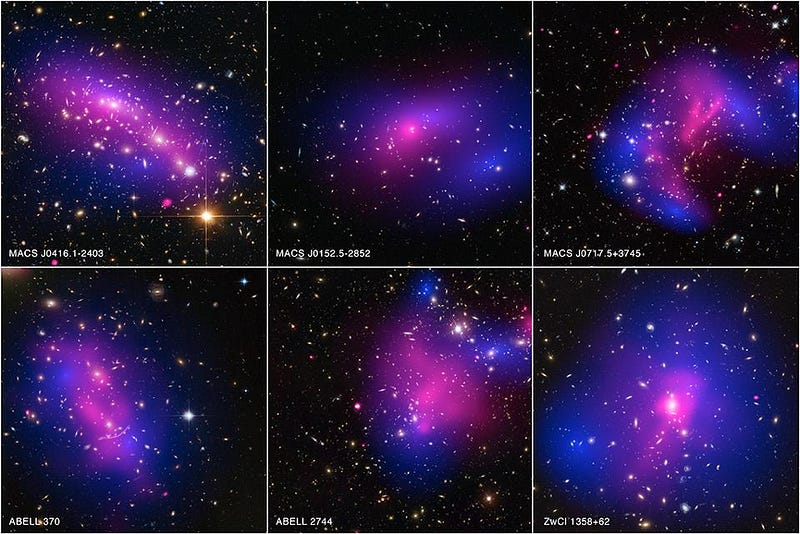
Rubin will go down in history alongside Lise Meitner, Chien-Shiung Wu and Henrietta Leavitt as physicists who undoubtedly changed our view of the natural Universe in an incredibly impactful way, yet were unjustly never awarded the Nobel Prize in Physics for their achievements. Rubin was as remarkable a human being and advocate for equality in the workplace as she was an astronomer.
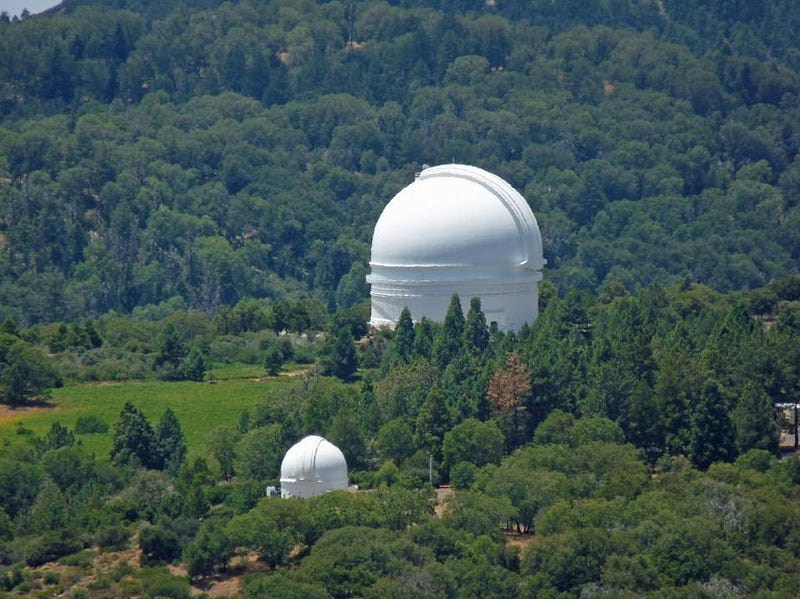
My favorite story about her comes courtesy of Neta Bahcall, who tells of Rubin’s first observing run at Palomar Observatory, where there were no women’s restrooms.
She went to her room, she cut up paper into a skirt image, and she stuck it on the little person image on the door of the bathroom. She said, ‘There you go; now you have a ladies’ room.’
Vera Rubin passed away Sunday night, December 25th, at the age of 88. The mother of dark matter is now another inextinguishable shining star in humanity’s and science’s history.
This post first appeared at Forbes, and is brought to you ad-free by our Patreon supporters. Comment on our forum, & buy our first book: Beyond The Galaxy!





